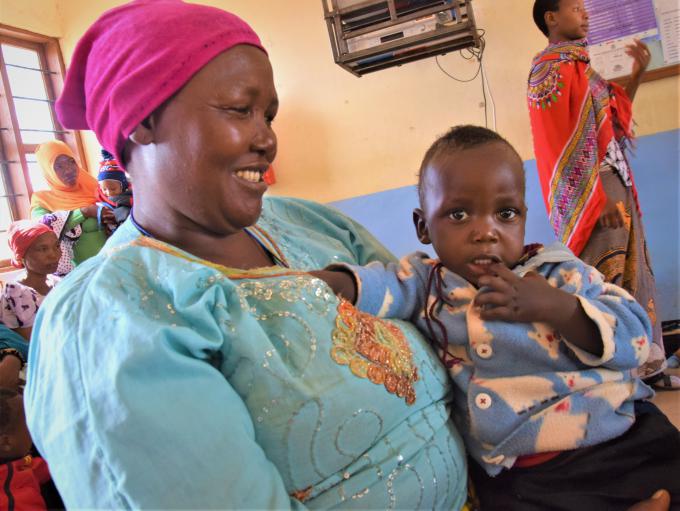Improving newborn and child survival in Tanzania: Hawa’s story

Ilongero, Singida
Hawa 43, is a mother of 10 children. Her last born Abdulrazzak 18 months is a healthy and happy toddler who survived child birth after being delivered by the road.
While there has been a trend for greater number of women to deliver at health facilities across Tanzania, mothers are still facing some challenges especially access to postnatal care. Almost two-thirds (63%) of births occur in a health facility, primarily in public sector facilities. However, 36% of births occur at home. Women with no education, those living in rural areas, and those in the poorest households are the most likely to deliver at home (THDS, MIS 2015-16).
When Hawa’s delivery day was due, she was certain that anything could happen. Hawa was unable to leave her home earlier and stay at the dispensary waiting for the child to come, because she knew that she might not be prioritized given the scramble for beds at the health facility.
Hawa survives childbirth by the roadside
“One night I started feeling labor pain and informed my husband who did not take it that serious and my mother as well. I had been there nine times and now this is the 10th time no wonder they did not bother to listen to me. About midnight the pain became extreme. They then decided to carry me using our bicycle to the nearest health facility which is about 16 kilometers from our home.
After a walk of about 5 kilometers I delivered a son with the help of my mother and my husband. I did not experience complication. Since my son and I survived, we thought it was better to return home. I went back to the clinic a month later”.
Background
Tanzania’s infant mortality rate is25 per 1,000 live births resulting from a number of factors some of which are access to quality services and facilities, poor quality of antenatal care services (and awareness of these services), lack of qualified, skilled birth attendants. Family planning and birth intervals coupled with malnutrition are additional factors that exacerbatethe issue.
Hawa tried to use family planning methods twice in her life-time and when she experienced excessive bleeding she didn’t want to repeat the practice but never asked for professional advice. Apart from that Hawa, had neither delivered at a health facility nor exclusively breastfed any of her nine children for the first six months. She realized that her first eight children were stunted and it was only after being better informed that she came to understand what stunting was.
“One day when I attended clinic with Abdurazzak, I heard about the Boresha Lishe programme. I was informed on the importance of hygiene and exclusive breastfeeding for the first six months. My child was only two months by then and weighed 3 Kgs, which means he was underweight. I started eating nutritious food to ensure that my child gets enough milk. When he turned 7 months I received the porridge flour. I learned how to prepare the porridge during a cooking demonstration conducted at the health facility. My son loves the porridge and he is now growing healthier. Apart from the porridge I also prepare local food and ensure as I was taught, so that he gets all the nutrients. Abdulrazzak is not stunted unlike my first nine children. I am thankful to that the teachings from this project have changed the life of my son,” Hawa explains.
For the past three years the Boresha Lishe programme directly reached a total of 59,334 beneficiaries whereas 4,256 were children under five, 2,669 lactating mothers, 2,020 pregnant mothers. It has trained 3,455 Care group volunteers, 246 promoters, 7,170 neighboring households and 41 health facilities.
Boresha Lishe is a four-year program funded by the European Commission; it is implemented by World Food Programme and Save the Children together with local partners. The project seeks to contribute to a reduction in prevalence of stunting in children under five in Dodoma and Singida Regions. It targets families with pregnant and lactating women, caregivers, and children under two years of age.
 Tanzania
Tanzania